The report of conference “Iran’s Flood” that was held in two days at the Sharif university
Repetition disaster and main lack that called crisis management.
The conference Iran Flood: aspects, consequences, and actions was held at the Sharif university.
At the two days conference that was held by Imam Ali Popular Students Relief Society in addition active presence of NGO activists, also numbers of university professors, managers, jurists, and environmental and climate activists gave a speech for the audience.
The speakers on the first day: MR. Mohammad Darvish faculty member of Research Institute of Forest and Rangelands. Dr. Mohsen Arsalani PHD in paleoclimate. Mr. Seyed Abolfazl Mirghasemi Master of Natural Environmental and Watershed Management. Aziz Abesi faculty member of Babol Nosshirvani university. Naser Karami climatologist and professor of Bergen university. Dr. Mahdi Zare an affiliate member of academy of science and faculty member of International Institute of Earthquake Engineering and Seismology. And Raouf Azari a social and media literacy activist.
On the same day also a panel of NGOs was held at the Electrical Engineering Department of Sharif university, that attended by Hosein Fotovat CEO of the Mother & child house Institute, Afkham Sabbagh executive director of Empowerment Mehr -O- Mah institute. Tayebeeh Sharifpour member board of directors of the Labor Children Assistance Network. Firouzeh Saber CEO of the National Network of Charities and Masoud Babaei one of operation managers of Imam Ali’s Society.
Human manipulation and flood vulnerability of Tehran.
Dr. Mahdi Zare began his speech by address on the necessity of knowing history of floods and droughts and reminding the important factors. Then reviewed the phenomena relevant to the heavy rainfalls. In his address he noted that landslides are one of the destructive phenomena cause by heavy rainfalls which result in many people were lost their houses.
Mr. Zare also considered the construction of buildings in the slopes that assumed dry areas to be risk factor for the areas developed in recently areas and warned that if heavy rainfalls happen at the same time with landslides in the northern areas of Tehran, this megacity might be affected by a huge flood.
Increase 500 % of flooding in recently years
Dr. Naser Karami climatologist and professor of Bergen University that had studied on processing of disaster in Iran said: in recently years the amount of rains decreasing about 30 %; but probability of flooding is increasing about 500 %. Mr. Karami noticed the reasons of unbalanced increasing flooding in the following:
1-The previous statistics and numbers of flood was mistake and has recorded incorrect.
2-Hydrological manipulation like dam’s construction and increase double area under cultivation of farmlands or totally, human factors causes imbalance of statistics.
3- Order of precipitation or totally changes climate causes this imbalance. If we take a diagram of the flooding trend, we see no change in the relationship with conventional climate trends and most the floods have occurred in climate extremes.
4-Geographical and anthropological factors such as coercion, poverty, tribal and social backgrounds are other factors.
This university professor continued his lecture to Impact of climatic structures and said: The global warming surge is rising. On the other hand, rainfall patterns are also changing. For example, diminishing rainfall it results changes in precipitation at different locations.
Absence of managers, despite previous coordination
The second day of the “Iran- flood” conference began on Wednesday, August 9, by Imam Ali’s Popular Students Relief Society at the Jaberebne Hayan’s Hall of Sharif University while five official crisis management in different institutions did not attend in conference despite previous coordination or if it was not possible for any reason to attend, no representative was introduced. According to the official announcement of the organizers of the conference, the panel of crisis management officials and administrators were scheduled to take place from 2:45 pm to 4:00 pm on Wednesday by Mr. Kamal Akbari Deputy of Social Partnerships Ministry of Social Affairs Ministry of Interior(Or their representative), Representative of the Red Crescent Society of Volunteers(Or their representative), Seyed Mohammad Mousavi Director General of the Crisis Management and Risk Reduction Office of the Ministry of Agriculture Jihad(Or their representative), Ismail Najar Chief of Crisis Management(Or one of the top managers), Hormoz Zakeri one of the managers of Ministry of Roads and Urban Development but there were no government figures to attend the conference while , dozens of guests were in the hall and waiting for the speakers to arrive, they changed their pre-synced schedules.
Zahra Rahimi, the CEO of the IAPSRS, who was going to lead the panel, regretted the promises these managers had made despite the coordination made with them in the past days and said: “We were expecting them to either declare this in advance or send their representatives.”
In this section, which was going to be held with the authorities of the organizations involved in the flood, questions were asked, but due to the untimely absence of the authorities, no answer was received. The authorities were expected to either declare their absence or send their representative earlier.
Mrs. Zahra Rahimi asked the following questions from the authorities:
“We wanted to ask Mr. Akbari how he positions the role of NGOs in crises and if the NGOs and if the NGOs going to define this position by each accident or not.”
“We also wanted to ask Mr. Mohammad Nasiri that what the Red Crescent’s measures to deal with the next natural disaster, like Tehran earthquake, are. Our observations show that the equipment and the power of this organization to deal with an event like the Tehran earthquake is far from what it should be.”
We wanted to ask our friends at the Ministry of Agricultural Jihad that “a lot of the problems in the current situation for farmers and ranchers has happened because they were provided with no insurance was provided in advance. What was the reason for this fault? When we told the families to evacuate, the response from the families was that “My livestock is like my babies”, and even in some cases, the family was keeping the dead livestock to prove their loss of the flood. While in these areas, each animal must have an ID card so that no one needs to keep their dead bodies to prove their ownership.
We should ask our friends at the Ministry of Housing and Road Construction that “how did you consider the civil defense and the road safety role and roads? Why did all the new bridges were destroyed?”
A governmental organization must be held accountable to the public institutions, but unfortunately, things are upside down these days. For example, when we ask about the results of the Labor Children Collection program, they say “you must tell us why they exist because of your dysfunctionality!”
However, we hope that in the media make these people respond.
There is nothing called crisis management in Iran
After that and on the sociology section of the conference, the sociologist Said Madani took the podium and said his observations of the flood days showed mismanagement and chaos in flood-affected areas.
“In the recent flooding, I had the opportunity to be in flood-affected areas and was involved in other issues there; mismanagement and chaos were there. Although my experience was limited to Lorestan, I learned from my friends in other areas that the rest of the country had a similar situation,” Madani said.
The occurrence of earthquakes, floods, etc. as well as our vast experience suggest that this management lacks the ability to intervene in natural disasters,” the sociologist noted, adding that crisis management in Iran is old, useless and completely inappropriate.
“There has been a shift in managing the crisis and natural disasters. In this new approach, there is a possibility of any natural disaster and should have these properties,” Madani added:
– The management of natural disaster should be prepared for all events.
– A multidimensional, pre – accident, disaster time, and post – disaster relief
With that look, we realize that we actually don’t have a crisis management. When floods occur, we only address some of the basic economic needs.
“Japan has the oldest crisis management since 1980 and the various levels of crisis management in Japan include national, provincial, municipal and citizenship, but various levels of crisis management in Iran include national, provincial and provincial levels,” Madani explained.
“At the times of crisis, needs analysis must be done by the local communities. Needs analysis based on the local needs means that only local people can declare the needs of their locales in the best way and participate in managing that,” he added at the end.
Social damages of natural disasters
Then, the sociologist Masoumeh Kamaluddin made some remarks about the origins of post-disaster social trauma.
In his opening remarks, she discussed the relationship between poverty and secondary damages after the disasters, and then referred to some other causes of social damages. Referring to intervention strategies and conditions, this sociologist offered the following practical suggestions for reducing post-disaster social damages:
1. Conducting social and psychological interventions
2. Implementing social emergencies in the days following natural disasters
3. Strategic and developmental efforts such as training sessions and stress management and decision making skills as well as marital relationship management and group counseling for men and women.
Finally, noting that as the early days pass, more and more societal damages appear, she emphasized the need for continued psychological and social support in the mid-term and long-term phases.
A need for psychological interventions
Fatemeh Ghasemzadeh, a child psychologist and chair of the board of directors of the Child Labor Relations Network, also presented her views in the Psychology and Social Assistance Panel of the Iran Global Flood Conference.
“From the concept of crisis and the resulting turmoil, we conclude that in addition to basic measures such as shelter, food, health, etc., we need psychological interventions as well,” she mentioned.
She continued by asking whether non-governmental organizations can intervene in the field of psychology in times of crisis. She answered: “Yes, in cases where the public institutions have a specialized force, they can intervene in these areas.”
Many shortcomings in the various legal aspects of natural disaster management
Sadegh Jamali, a senior environmental law expert and a member of the National Committee for Flood Research and Rooting, was also a member of the legal panel of the Iran Flood Conference.
Jamali generally spoke about the civil responsibility of the government:
The basis of the formation of the state from the legal point of view is the rule of law. The responsibility of the state therefore lies in the very essence of the definition and formation of the state. Basically, when the state collects taxes, it is obliged by law to prevent damages, prevent losses and, in the event of losses, compensate for damages for the purpose of bringing order. State responsibility for natural disasters, including floods, is enshrined in Article 29 of the Constitution.
The flood showed that we have many problems and shortcomings in the various legal aspects of natural disaster management. Focusing on the subject of water that is my specialty, I will examine the legal dimensions of the flood from three perspectives:
First, discussion of rules. In a general classification, two types of rules can be seen. Some laws are fundamentally problematic, destructive and allow for aggression. For example, in the 2015 Budget Act, there is a law authorizing the Ministry of Energy to sell some of the oils. It is not a proper law at all.
Another inappropriate law that makes problem for any concerted action at the drainage basin level is the Act for turning regional water companies into provincial ones ratified on 2004, which governs water at the provincial level without regard to its effects on downstream provinces.
On the other hand, we have very good high level laws and documents, such as the Comprehensive National Plan of Rescue, which has delegated four tasks to the task force through the creation of a specialized flood and river flood task force under the responsibility of the Ministry of Energy. The establishment of flood forecasting and flood alert systems and flood zoning are two key tasks mentioned in the task description.
The second dimension is the challenge of law enforcement. If the flood and rescue task force had been assigned task assignments, much of the flooding problems would have been preventable and would have been more successful. Another example is Note 2 of Article 5 of the Fair Water Distribution Act, which authorizes the Ministry of Energy to institute lawsuits and demolish a conflicting riverbank. However, according to official Fars province justice experts, the relevant regional water company has not issued a single warning about changing the use of the Koran gate.
The third dimension is inadequate supervision of responsible institutions.
Jamali added that the prosecutor generally has the competence as a plaintiff to take action to prevent unauthorized construction, intrusion into rivers or similar illegal activities. Fortunately, for the Shiraz case, the prosecutor of the city quickly came up with the case and took a good action and even considered the act of those who have caused all this as a case of manslaughter.
Who authorizes government and military institutions?
Saeed Dehghan, chief justice lawyer and vice president of the board of directors of civil society at the Iran Global Flood Conference, said: “The constitution considers environmental protection as a public duty and we must strive to preserve natural resources for future generations. Eliminating it is a violation of the law.
He added, “Are we facing with the lack of law in environmental degradation? How much the executive branch does involves in environmental degradation? Does the executive branch itself have interests in this? Many coasts are owned by government agencies and institutions. Often in the possession of military and paramilitary organs. Who authorizes these organizations?”
In part of his remarks, he also addressed institutionalized lawlessness in the community and raised the question that if we had the power and wealth to build a villa what might have we done?
He also added: “How decisive is the judiciary?” Article 5 (2) states that prevention is the task of the judiciary, but for the time being it is purely for security offenses and for ideological purposes.
We do are involved in some of these offenses.( environmental degradation)
The task of the civil society is to question, The question of whether or not the proctor organizations are doing their job, as well as presenting a plan and idea along with assistance. Regarding the duties of the government after the event, it is only the show-offs instead of its main duties. The government assists in the form of privilege when it wants to help. We need to ask the government to allocate at least a few percent of resources to compensate for the disaster after a flood or natural disaster. How much money was spent on pointless relief organs? We understand the difference between privilege and right. The right to health and safety of the people must be established in society and no one has the right to compromise that.
Theorists emphasize compensation for the life losts, he added. But to compensate for the financial loss we must prove fault or default, but how? Unfortunately, the factors that inflict damage on people’s property are being ignored. Where is the Plasco Accident Report? Is it complete? I haven’t read the report, but I know civil society must be aware of this investigation. Where is the flood incident report? Is anyone going to be present? It must be be noted that the delay does not cause the report to fail and does not cause anyone to get a wrong understanding of the events.
Dehghan also noted that, in the international levels, in accordance with Article 11 of the International Covenant on Economic, Social and Cultural Rights, governments are committed to providing the least prosperity for the people. As we know, Iran has acceded to the Covenant According to Article 9 of the Civil Code, At the present, Covenant is now part of our domestic law and it must be executed.
In the final part of his remarks, he emphasized that war has different dimensions and according to our experts, we are now in a state of economic warfare. The Geneva Conventions require that the human rights must be applied even to the enemy in times of war. The question that arises is that why some international aids was stopped? Some believe it was because we were not able of handling it. But unfortunately, we sometimes find that some make unjust comments that discredit us as if the disaster is making them good enough fortune.
Observations of volunteers of Imam Ali’s society during the flood
Elaheh Allah Karimi was a volunteer in IAPSRS in Lorestan. “In the early days, the Red Crescent declared that we do not need help in Mamulan and Pul-Dukhtar areas and that the forces in other parts of the province are providing assistance and relief,” she said, referring to the general situation of the flood-prone areas of Lorestan province in the early days.
she recalled that in the early days of the flood, assistance was not possible through the roads. Fortunately, the military orangs provided the necessary assistance in this regard, and IAPSRS was able to deliver donated items to the flooded people through the military’s helicopter in the early days of the flood.
she went on to talk about the current problems in the areas and said that despite the temperature of 50 degrees Celsius, some families do not have housing after four months, and the other problem is the housing fund lending to people living in villages that cross Two rivers of Cham-Mehr, while people in these villages need to be moved, but mortgages have been provided to build houses in that area.
she added that in areas like Afrin and Zorantil, there was no land left for people to rebuild, and some people were reluctant to leave the camp and return to their normal life because of the facilities at the camps.
This volunteer of the IAPSRS explained that the main focus of the relief effort is to have a short-, medium- and long-term plan. These issues can also help to better manage humanitarian aid. For example, we distributed canned food and groceries in the early days, but in the second week, distributing shovels and other equipment helped people to clean their homes from mud, which made them very happy.
Karimi mentioned the problems in relief and charitable giving and also explained one of the successful experiences of IAPSRS was effective communication with the tribal elders which led to better performance and more so that this connection continues after the flood.
According to this social activist, Imam Ali’s population has experience of working with different ethnicities in many instances; for example, in the “Persian League”, children and adolescents from different ethnicities and cultures work well together.
she went on to point out one of the most important things in relief; in the early days, children are often overlooked. But families prefer to give children more care.
Karimi emphasized that Lorestan province has the highest unemployment rate in the country and more attention should be paid to this province. This has increased the psychological pressure on the people. That’s why Imam Ali’s population sent a group of volunteer psychologists to the area.
Another topic raised by Karimi was the positive impact of the media; in the first few days of the flood, there was a news boycott that, if it were not for the people themselves, there would only be news of flooding in KhorramRood and no news of flooding into other areas. The media, of course, collaborated well with Imam Ali’s population and provided information published by the population as their source. This trust made us even more trusting by the people.
After that, Mohsen Khatibi, a volunteer at IAPSRS from Khuzestan, shared part of his experience in this province. Khatibi mentioned the impact of the presence of social workers at under- privileged areas, especially during crises like floods, and continued: “As we entered Zobeyd village, we identified a woman who was said to be unable to talk. After the assistance of IAPSRS’ social workers, she began to talk after 25 years, while her children did not know she could talk.”
“When the evacuation order was issued because of the flood flow, residents refused to evacuate, leaving their properties on their roofs. So, we initially began to talk to them; in the first stage, a needs analysis was conducted. In the next step, we distributed plastic sheets to families to cover their belongings. Among other workers ‘ activities was inviting several children in the Arab region to the Persian Team (IAPSRS football team),” Khatibi added.
“One of the influential cases during the assistance provided was a child who was dreaming of going to school, but unfortunately, she was not financially capable for doing so. After our first meeting with this child, she was waiting for us to bring her stationaries and school outfit, so that she can go to school. After we gave her these things as a gift, her wish came true,” Khatibi continued.
“According to the decision made at IAPSRS and with the help of our volunteers at Shiraz and the benefactors introduced by them, we opened a library at Alhoriyeh village and bought books for about 400 students,” Khatibi emphasized.
“While the authorities have promised to compensate the damages made in the recent flood, some of the payments are not made yet,” he noted as the last point.
Maryam Ali-Mohammadi, a volunteer at IAPSRS at Mazandaran province, mentioned that IAPSRS was present in the flood-affected areas since March 21, and made attempts to empower the local community.
“Hygiene issues were of the main problems in the flood-affected areas, and due to the long-term inundation in the flood-affected cities of Golestan province, the condition of restrooms was terrible. There were corpses of animals and human wastes in the water running on the city, and this problem should be solved as soon as possible,” she added.
The two-day conference on Iran’s flood was finished by reading aloud a final statement and signing a petition by the participants.
Below you may find the final statement:
Final Statement of the Conference on Iran’s Flood
1. The results of the numerous studies of independent and state research centers as well as natural disasters in recent years in Iran and the Middle East reveal that Iran is at the risk of natural disasters.
2. What makes those concerned about natural disasters and civil society activists is the lack of adequate preventive measures and proper management of the damages made by these accidents. Inadequate attention to this issue in accidents like the Kermanshah earthquake and Iran’s flood causes damage to Iranian in the areas affected by these natural disasters.
3. With respect to the current status of the country and potential national facilities, many of the damages caused by natural disasters can be managed by taking proper preventive measures. The lack of actual preventative planning and the inefficiency of the current measures will result in injury to Iranians in the future natural disasters.
4. Our experience shows that while the disasters happened many months ago, many areas affected by the accidents in the recent years are deprived the basic infrastructure of living such as drinking water, and the current economic and living conditions have also decreased the ability of some of our countrymen to pay back their loans, and the authorities should pay attention to this issue.
5. According to research, Tehran earthquake is a major and probable threat, and with respect to existing relief facilities and crisis management patterns in past natural disasters in the country, such a disaster would lead to the death of many of our countrymen.
6. At the Iran’s flood conference, crisis management authorities and administrators were invited, but despite the continuous follow up of IAPSRS members, unfortunately none of them attended the conference. Their absence once again indicates that the public institutions do not have a place in the correspondent authorities’ evaluation and decision-making. Still, it is expected that these authorities take necessary measures to prepare the Iranian cities for such disasters, properly plan for nationwide preventive measures, and let our countrymen and active NGOs providing aid activities know about the actions and plans.

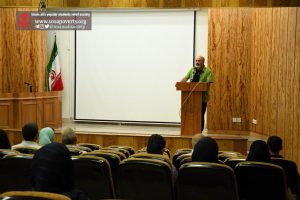
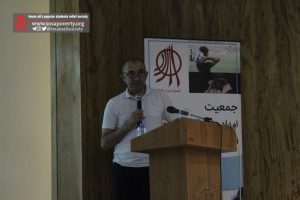
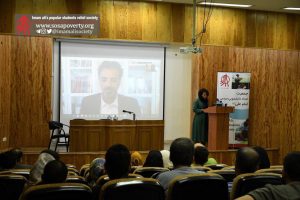
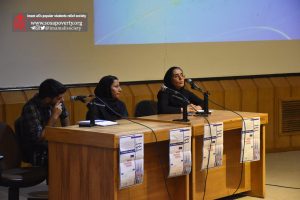
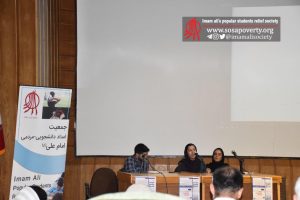


Leave a Reply
Want to join the discussion?Feel free to contribute!